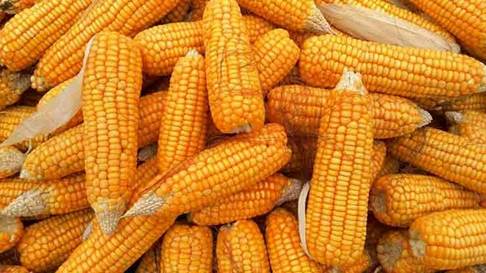What Happened?
- U.S. Commerce Secretary demanded India import U.S. corn.
- India has been self-sufficient in maize, producing ~50 MT in 2024–25, with 10–12 MT diverted to ethanol.
- India imports ~1 MT maize (2024–25), mainly from Myanmar & Ukraine — but not from the U.S.
- U.S. maize is largely GM-based, which India resists.
- U.S. push is linked to agribusiness interests and Midwest political stakes (corn belt).

Relevance
- GS 2(International Relations): India–U.S. relations, WTO, trade diplomacy.
- GS 3(Agriculture): Agriculture, food security, ethanol blending, energy security.
Contextual Background
- India’s maize yield: <4 t/ha vs. world avg. 6 t/ha; U.S. yield: ~12 t/ha.
- Ethanol blending (20% by 2025) creates new maize demand.
- U.S. agriculture → export-oriented, capital-intensive, seeks overseas markets.
- WTO rules have curtailed subsidies, forcing U.S. agribusiness to push exports.
Policy Angle
- India’s GM policy: Only GM cotton approved; GM food crops under moratorium.
- Ethanol blending policy (E20 target): Part of India’s renewable & energy security strategy.
- Trade law: Anti-dumping concerns if U.S. maize is imported at 70% of Indian cost.
- Political economy: Farmers’ protection, rural employment, and electoral stakes (e.g., Bihar maize farmers).
Data & Reports
- India’s maize output: ~50 MT (2024–25).
- Imports: ~1 MT (2024–25), 60% Myanmar, rest Ukraine.
- U.S. maize: ~350 MT annually, 45 MT exported.
- Ethanol substitution potential: 20% blending can save ~$10B forex annually.
Multi-Dimensional Overview
- Political:
- U.S. push tied to Republican corn-belt voters & Iowa primaries.
- India resists due to farmer distress risks and upcoming state elections.
- Economic:
- U.S. maize is cheaper → threat of dumping.
- India risks harming its domestic ethanol-maize ecosystem.
- Forex savings from domestic ethanol could be eroded.
- Social:
- GM safety concerns (toxicology, food chain risks).
- Lessons from Mexico: NAFTA imports displaced 1M+ farmers.
- Environmental:
- Ethanol programme reduces oil imports and emissions.
- Importing feedstock dilutes green & self-reliance goals.
- Technological:
- U.S. mechanisation vs. India’s labour-intensive agriculture.
- India’s scope: R&D in higher yield, non-GM maize hybrids.
- Ethical:
- Balancing farmer livelihoods vs. global trade obligations.
- Corporate agribusiness vs. smallholder protections.
Arguments & Counter-Arguments
- For imports: Cheaper corn, bridging ethanol demand-supply gap, better yield efficiency.
- Against imports: Farmer distress, risk of GM contamination, undermining ethanol programme, political backlash.
Conclusion
- Prioritise self-reliance in ethanol feedstock via better maize yields & diversified crops.
- Invest in research on non-GM hybrids & biofuels.
- Use trade diplomacy to resist U.S. pressure while leveraging other areas (tech, services) for negotiation.
- Safeguard farmer livelihoods & rural employment while balancing climate and energy goals.
Maize (Corn) – Value Addition
Agro-Climatic Requirements
- Climate: Warm, humid climate; grown in both tropical & subtropical regions.
- Temperature: 21–27°C (optimum); frost-sensitive.
- Rainfall: 50–100 cm; drought-sensitive, but also waterlogging intolerant.
- Soil: Fertile, well-drained alluvial or red loamy soils; pH 5.5–7.5.
- Season: Kharif (major), also Rabi & Spring (due to short duration hybrids).
Leading Producers in India
- Top States (2023–24):
- Karnataka (~16–17% of national output)
- Madhya Pradesh
- Maharashtra
- Telangana
- Bihar
- Together, these five states contribute ~65–70% of India’s maize output.
India’s Global Standing
- Production (2024 est.): ~35–50 million tonnes (varies by source).
- Share in world production: ~3% (U.S. ~30%).
- Rank: 4th–6th globally (after U.S., China, Brazil, Argentina).
- Yield: ~3.5–4 t/ha (vs. world avg. ~6 t/ha, U.S. ~12 t/ha).
Uses of Maize in India
- Food grain: Direct consumption (cornmeal, makki roti, snacks).
- Feed: Poultry, cattle, aquaculture (major share).
- Industry:
- Starch, sweeteners (glucose, HFCS), plastics, cosmetics.
- Alcohol and beverages.
- Biofuel: Ethanol blending (10–12 MT maize diverted in 2024–25).
Policy & Programmes
- National Food Security Mission (NFSM) – Maize: productivity enhancement.
- Ethanol Blending Policy: 20% target by 2025–26 → maize as feedstock.
- ICAR – Indian Institute of Maize Research (Ludhiana): R&D on hybrids.
- Price support: MSP for maize in Kharif MSP schedule (2024–25 MSP: ₹2,225/qtl).
Challenges
- Low productivity compared to global peers.
- Vulnerability to pests (Fall Armyworm outbreak since 2018).
- Price volatility due to poultry & ethanol demand.
- Resistance to GM maize (policy + socio-political concerns).
- Climate stress: rainfall variability affects yields.



